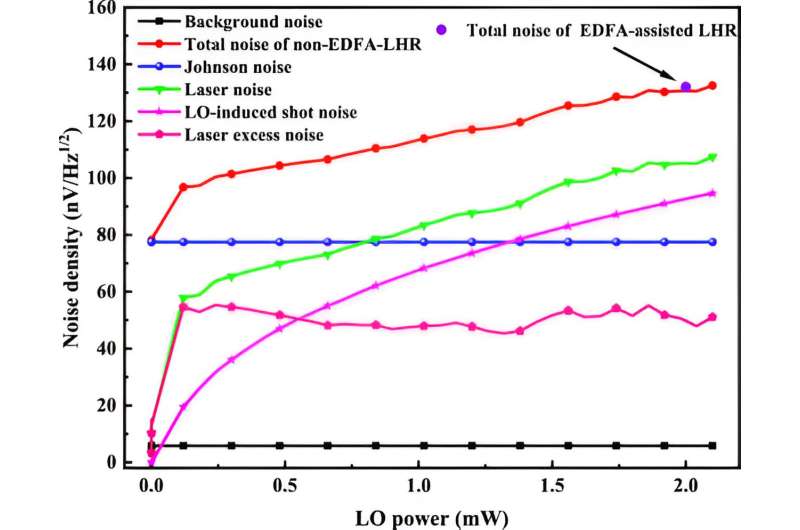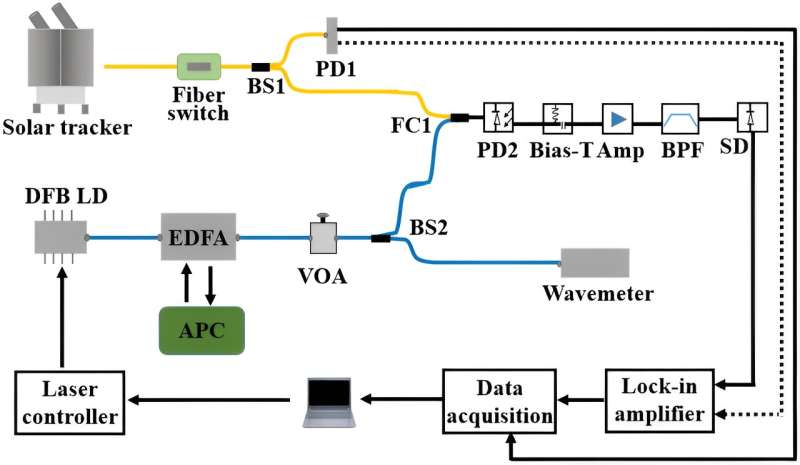This article has been reviewed according to Science X's editorial process and policies. Editors have highlighted the following attributes while ensuring the content's credibility:
fact-checked
peer-reviewed publication
trusted source
proofread
Enhanced laser heterodyne spectroscopy helps atmospheric greenhouse gas measurements

A research team led by Prof. Gao Xiaoming from the Hefei Institutes of Physical Science of the Chinese Academy of Sciences has improved the measurement accuracy of atmospheric greenhouse gases, including carbon dioxide, by using an Erbium-doped Fiber Amplifier (EDFA)-assisted Laser Heterodyne Radiometer (LHR).
The study was published in Optics Letters, and was selected as an Editor's Pick.
LHR, known for its high sensitivity and high spectral resolution, has become the next generation of lightweight satellite payloads. However, during the scanning process, the signals measured by heterodyne radiometers often suffer from problems such as baseline slope and reduced signal-to-noise ratio, compromising measurement accuracy.
In this study, the researchers developed a detection scheme for near-infrared laser heterodyne spectroscopy based on EDFA.
By adapting the EDFA for automatic power control, the researchers successfully amplified and stabilized the power of the local oscillator (LO) DFB laser, resulting in a remarkable reduction of baseline fluctuations. This optimization led to a significant improvement in the accuracy of the processed atmospheric transmission spectrum.
Operating of the LHR in the shot-noise-dominated regime during scanning was made possible by using an EDFA with an automatic power-lock function. By eliminating errors caused by baseline slope, the EDFA-assisted LHR significantly improved its performance.

"This optimization allowed the LHR to operate in the shot-noise-dominated regime during scanning," said Dr. Li Jun, a member of the team.
In experimental measurements of atmospheric CO2 transmission spectra using the EDFA-assisted LHR, the signal-to-noise ratio of the heterodyne signal witnessed a threefold improvement.
"These results prove the effectiveness of the EDFA-assisted LHR in achieving higher accuracy and precision in atmospheric gas measurements," said Dr. Li.
This discovery could improve ground-based LHR remote sensing and enhance greenhouse gas knowledge and monitoring, according to the team.
More information: Jun Li et al, Erbium-doped fiber amplifier (EDFA)-assisted laser heterodyne radiometer (LHR) working in the shot-noise-dominated regime, Optics Letters (2023). DOI: 10.1364/OL.501761
Journal information: Optics Letters
Provided by Chinese Academy of Sciences




















